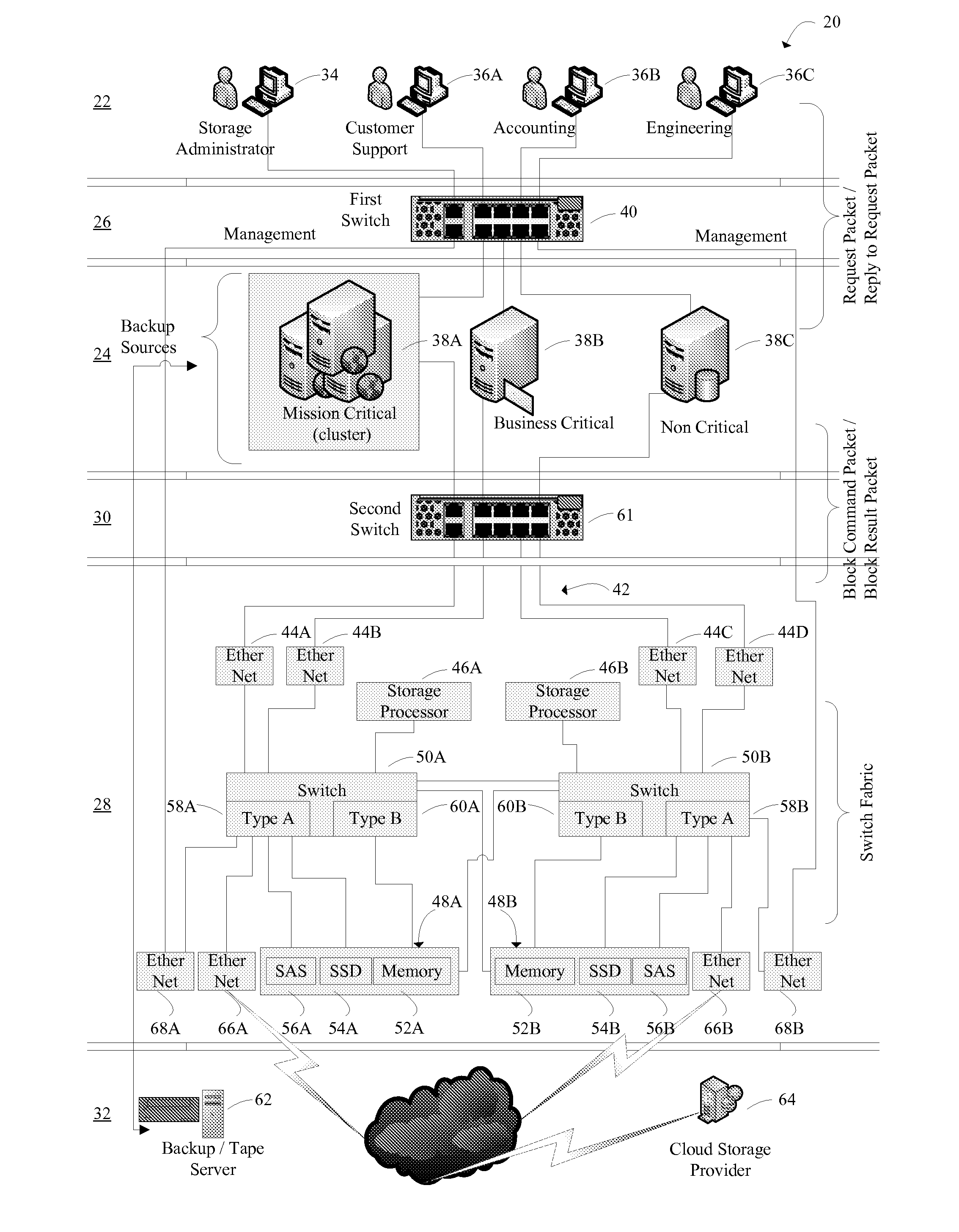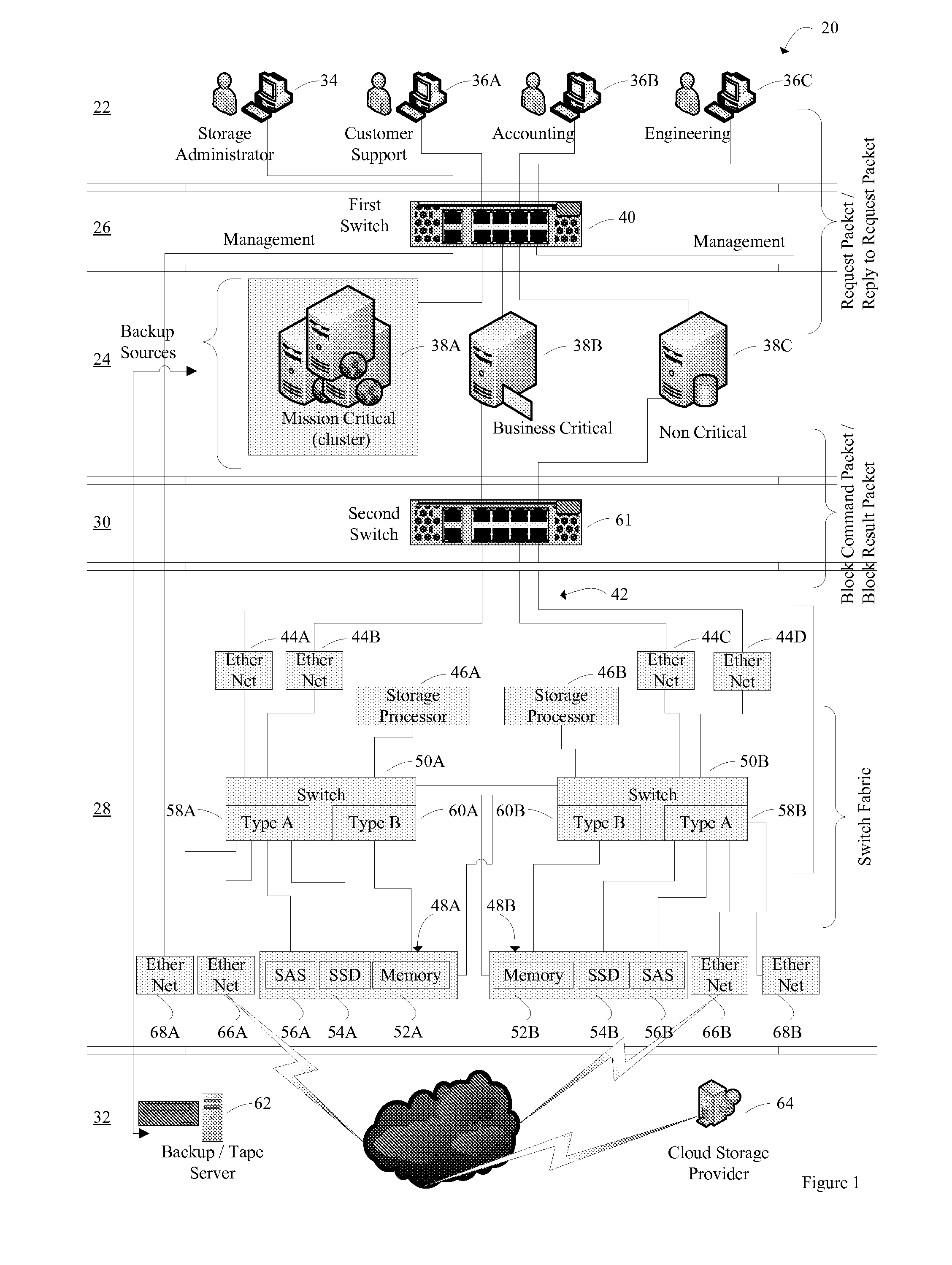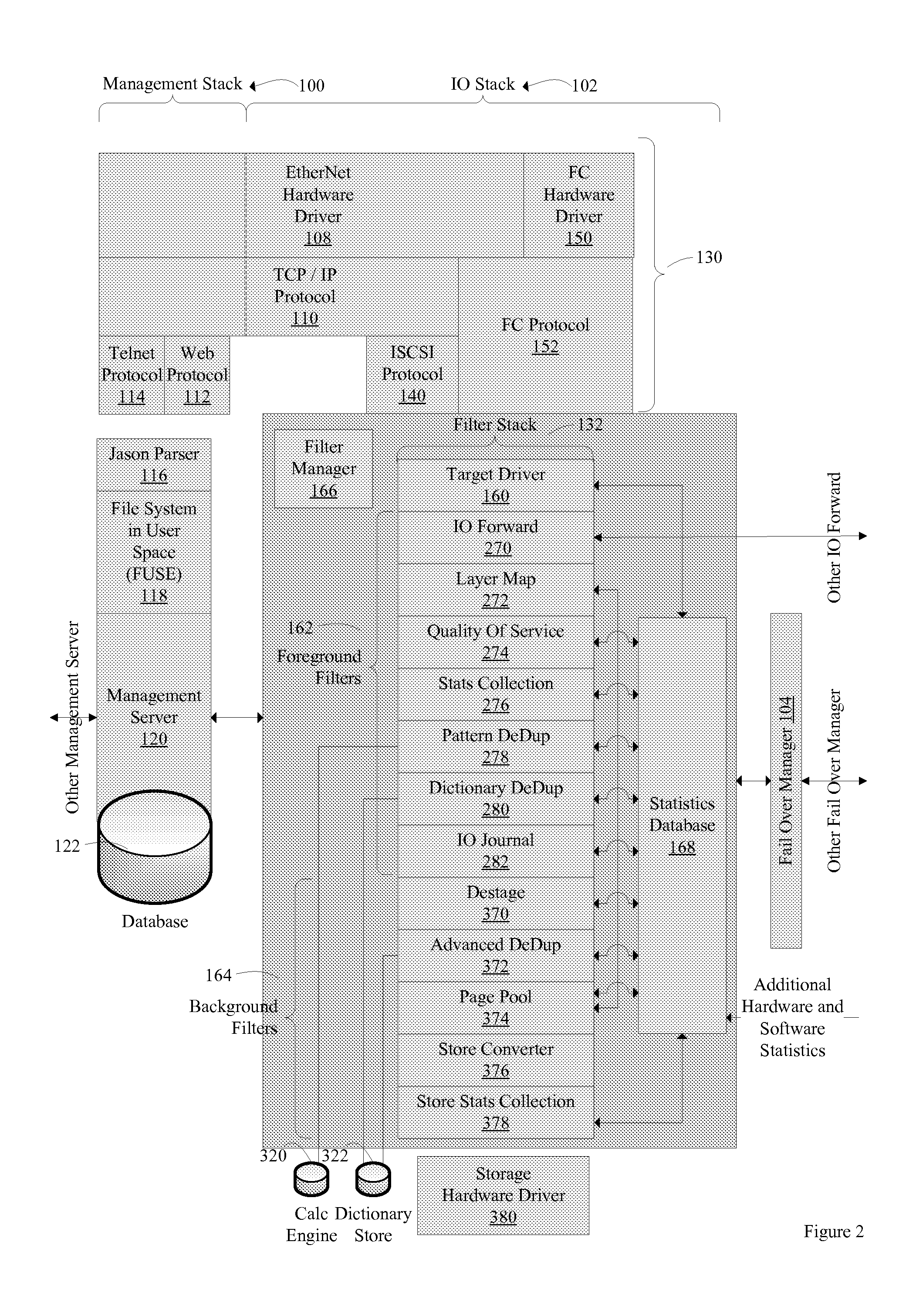Primary Data Storage System with Staged Deduplication
a data storage system and staged deduplication technology, applied in the field of primary data storage systems, can solve the problem of limited time, achieve the effect of facilitating the meeting of performance criteria, fast read and write times, and potent testing
- Summary
- Abstract
- Description
- Claims
- Application Information
AI Technical Summary
Benefits of technology
Problems solved by technology
Method used
Image
Examples
Embodiment Construction
Networked Computer System
[0032]With reference to FIG. 1, an embodiment of a networked computer system that includes an embodiment of a primary data storage system is illustrated. The networked computer system, hereinafter referred to as system 20, includes a user level 22, an initiator level 24, a first switch level 26 that facilitates communication between the user level 22 and the initiator level 24, a primary data storage level 28, a second switch level 30 that facilitates communications between the initiator level 24 and the primary data storage level 28, and a secondary data storage level 32.
[0033]User Level.
[0034]The user level 22 includes at least one user computer that is capable of being used in a manner that interacts with the primary data storage level 28. A user computer is capable of requesting that: (a) data associated with the user computer be sent to the primary data storage level 28 for storage and (b) data stored in the primary data storage level 28 be retrieved an...
PUM
 Login to View More
Login to View More Abstract
Description
Claims
Application Information
 Login to View More
Login to View More - R&D
- Intellectual Property
- Life Sciences
- Materials
- Tech Scout
- Unparalleled Data Quality
- Higher Quality Content
- 60% Fewer Hallucinations
Browse by: Latest US Patents, China's latest patents, Technical Efficacy Thesaurus, Application Domain, Technology Topic, Popular Technical Reports.
© 2025 PatSnap. All rights reserved.Legal|Privacy policy|Modern Slavery Act Transparency Statement|Sitemap|About US| Contact US: help@patsnap.com



